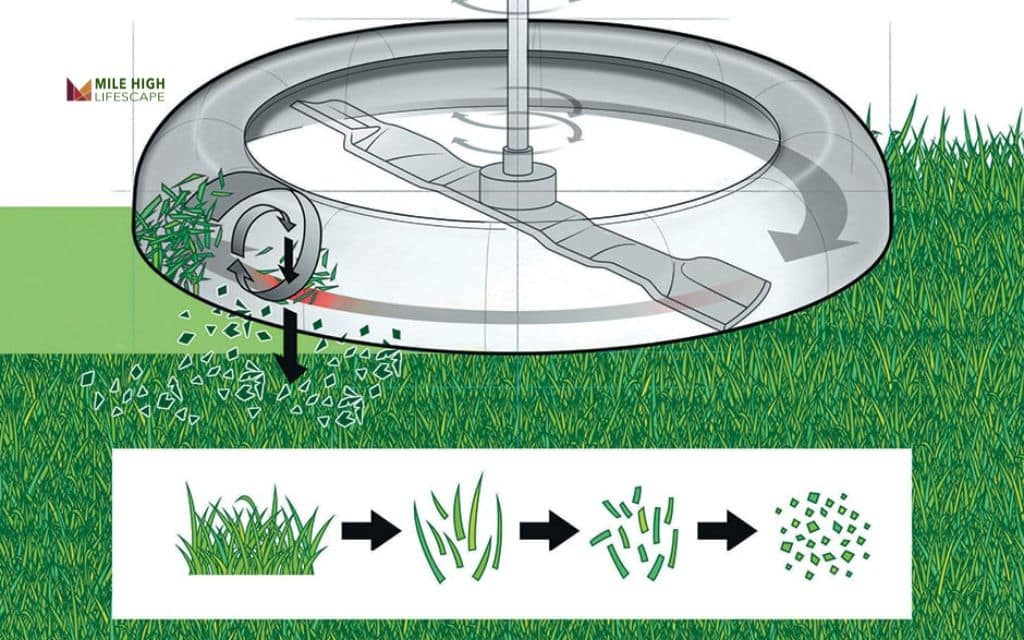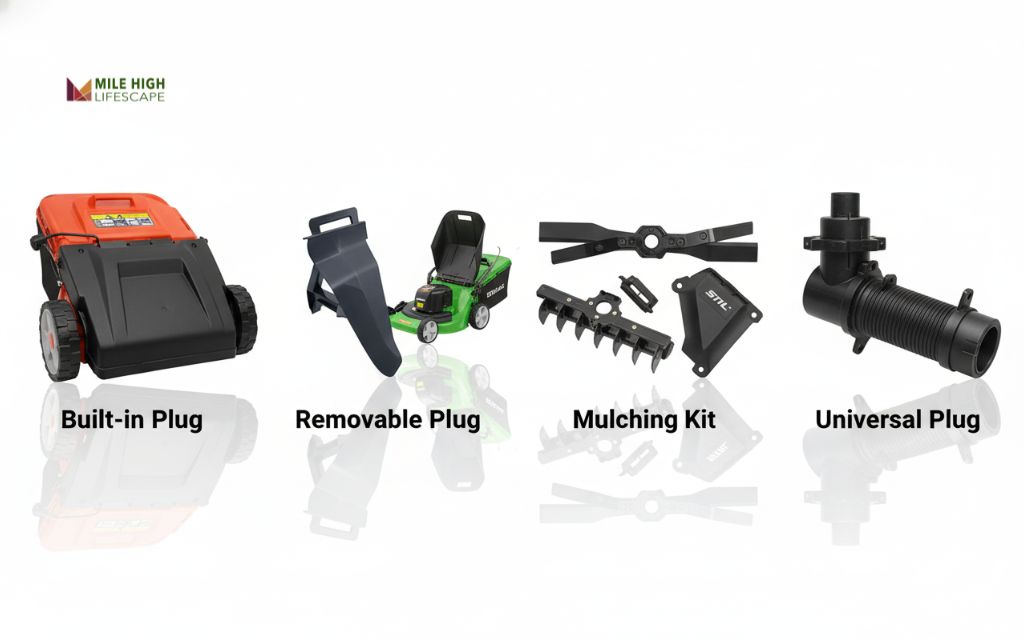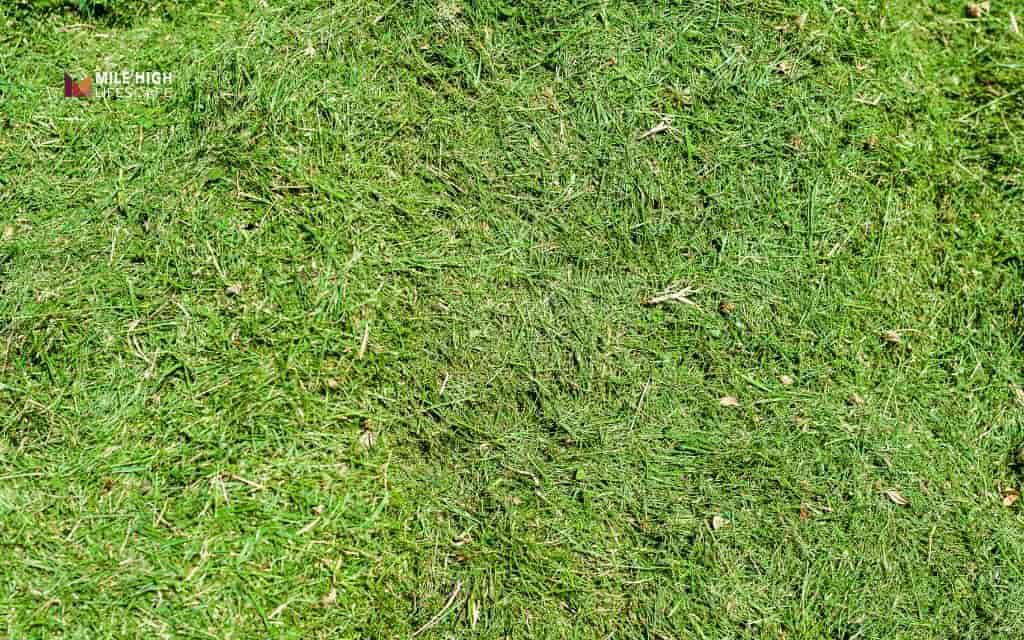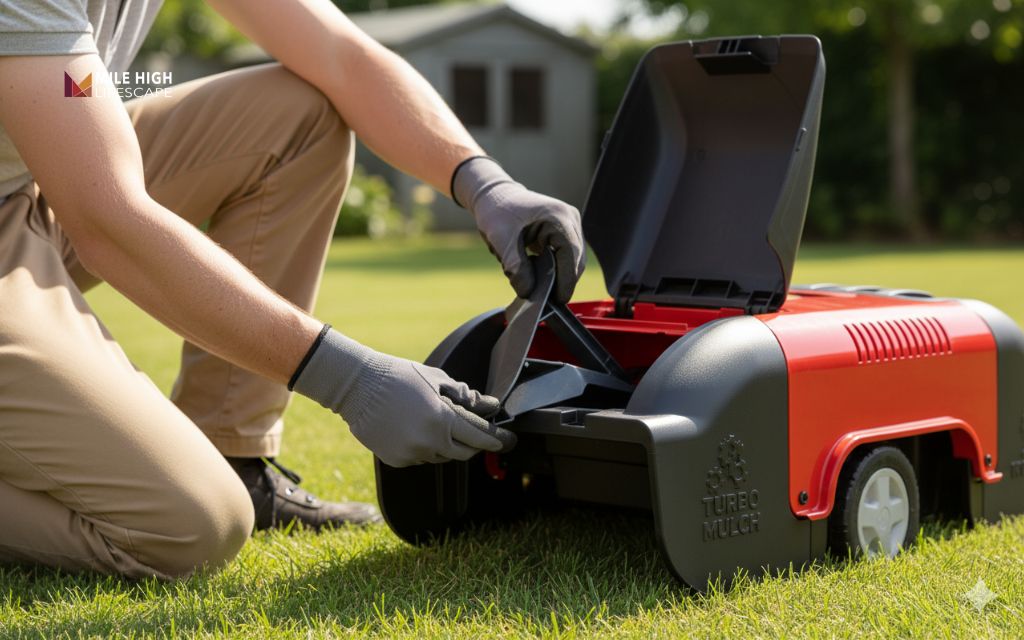If you’ve recently purchased a lawn mower or you’re exploring ways to improve your lawn naturally, you’ve probably come across the term “mulch plug” in your mower’s manual or at the local hardware store. But what is a mulch plug, and why should you care about this attachment? Let’s find out more about this device.
What is a mulch plug?
A mulch plug (or a mulching plug, mulcher plug) is a removable cover or insert that fits into your lawn mower’s discharge chute.
Instead of being bagged, blown onto your driveway, or scattered unevenly across your yard, the clippings stay inside the mower deck where the blades can work their magic. The mower’s blades chop these clippings into tiny, confetti-like pieces and redistribute them evenly back into your lawn, where they decompose naturally and feed your grass.
This simple lawn mower mulching plug transforms your standard mower into an eco-friendly lawn care machine that does double duty: cutting and fertilizing in a single pass.

How a mulch plug works
Understanding what a mulching plug on a lawn mower actually does helps you appreciate why it’s such a valuable tool. The process happens in four distinct stages:
- The plug blocks the chute: When you install the mulch plug for lawn mower operation, it seals off the mower’s side or rear discharge port completely. This creates a closed system where clippings can’t escape.
- Blades recirculate grass clippings: With nowhere to go, the grass clippings stay under the mower deck where specially designed mulching blades spin rapidly. These blades feature curved edges and a unique lift design that keeps clippings airborne longer, cutting them multiple times into fine particles.
- Micro-clippings settle into the lawn: Once the clippings are finely chopped, they fall evenly back into the turf, settling down between the grass blades. They create a thin organic layer that breaks down quickly within a few days.
- Natural fertilization occurs: As these micro-clippings decompose, they release essential nutrients back into your soil. It’s like applying a slow-release organic fertilizer every time you mow.
Types of mulch plugs
Not all lawn mower mulch plugs are created equal. Depending on your mower type and model, you’ll encounter different mulching systems:
| Type | Works With | Description | Best For |
| Built-in plug | Dedicated mulching mowers | Integrated plate or flap that’s part of the mower design | Homeowners who exclusively mulch and want a premium mulching experience |
| Removable plug | Most modern push mowers | Insert that fits into the side discharge chute | Those who want flexibility to switch between bagging, side discharge, and mulching |
| Mulching kit | Standard side-discharge mowers | Includes both a mulcher plug and specialized mulching blades | Budget-conscious DIYers converting existing mowers |
| Universal plug | Various mower brands | Adjustable aftermarket options | Older mowers or discontinued models |
Pro Tip: Check your mower’s manual before purchasing a separate plug. Many popular brands like Honda, Toro, Craftsman, and John Deere already include a push mower mulch plug or offer one as an accessory specifically designed for your model.

What does a mulch plug do for your lawn?
Now that you understand “what is a mulch plug” on a lawn mower, let’s talk about why you should consider using one. The benefits go beyond simple convenience:
Saves water in dry climate
Those finely chopped grass clippings act as a natural moisture-retaining mulch layer, keeping your lawn hydrated longer between waterings.
In Denver’s semi-arid climate where water conservation matters (and water bills add up quickly), this can reduce your irrigation needs.
That layer of organic matter helps protect soil from our intense sun exposure and reduces evaporation during hot summer days.
Naturally fertilizes your lawn
Here’s a fact: grass clippings are about 85% water and 4% nitrogen by weight. Each mowing returns approximately 1 pound of nitrogen per 1,000 square feet per growing season.
That’s enough to cut your synthetic fertilizer needs by up to 25%, saving you money and reducing chemical runoff into stormwater systems.
Reduces waste and saves time
Denver residents send tons of grass clippings to landfills every summer. Bagged waste that could have nourished lawns instead.
With a lawnmower mulching plug, there’s no more stopping every few minutes to empty a heavy bag, no hauling bags to the curb, and no raking up scattered clippings afterward. You simply mow and you’re done.
Improves Denver’s challenging clay soil
As those clippings decompose, they increase microbial activity and add precious organic matter to your soil. This is valuable for you dealing with heavy clay soil that’s naturally low in organic content in Denver. Over time, regular mulching helps improve soil structure, drainage, and nutrient-holding capacity.

Potential drawbacks (and how to avoid them)
Let’s be honest, mulching isn’t always perfect, especially when you’re learning what a lawn mower mulcher does best.
Here are common issues you can face and practical solutions:
| Issue | Why It Happens | Fix |
| Clumping or uneven mulch distribution | Mowing wet grass or cutting too much height at once | Mow when grass is dry (usually afternoon); use sharp blades; follow the ⅓ rule |
| Blowback of clippings | Frequent afternoon winds | Mow during calm periods – early morning or late evening work best |
| Visible grass residue on lawn | Trying to cut too much grass in a single pass | Mow weekly during peak growing season; consider mowing twice if grass grows tall |
| Heat stress on grass | Thick mulch layer traps heat against the soil | Maintain proper mowing height (3-3.5 inches) during summer months; don’t mulch during drought unless irrigating |
| Clogged mower deck | Buildup of dried grass and moisture | Clean the underside of your deck after every 2-3 mows; avoid mulching in morning dew |
How to install and use a mulch plug
Here’s exactly how to set up and use a mulching plug lawn mower system:
Step 1: Check compatibility
First, verify that your mower supports mulching. Look for labels like “3-in-1,” “mulch / bag / discharge,” or “mulching capability” on the mower deck or in your owner’s manual. Most mowers manufactured after 2010 include this feature.
Step 2: Remove the bag and close the discharge chute
Detach your side bagging system or grass catcher completely. If your mower has a discharge deflector (the flap that normally hangs down), swing it closed or remove it according to your manual.
Step 3: Insert the mulch plug
Take your mulch plug and firmly insert it into the discharge chute opening. It should fit snugly and stay in place during operation, most designs click or snap into position. Make sure it’s completely seated to prevent any clippings from escaping.
Step 4: Install mulching blades
While not always necessary, what does a mulching kit do better than standard blades? Mulching blades have curved edges and additional cutting surfaces that improve clipping circulation and create finer particles. If your mower came with standard straight blades, consider upgrading to mulching blades for optimal performance.
Step 5: Set the proper mowing height
For Denver’s common cool-season grasses (Kentucky bluegrass, turf-type tall fescue, perennial ryegrass), set your mower deck to 3-3.5 inches.
This height is crucial for mulching success. It leaves enough grass blade surface for photosynthesis while creating manageable clipping volume.
Step 6: Mow frequently and follow the one-third rule
Never cut more than one-third of the grass height in a single mowing. If your grass is 4.5 inches tall, don’t cut below 3 inches. This rule prevents creating too many clippings at once, which can smother your lawn and create an unsightly mess.
Step 7: Maintain your equipment
After each mowing session (or every 2-3 sessions), tip your mower safely and clean the underside of the deck with a putty knife or deck scraper.
Remove any built-up grass debris to maintain optimal airflow and prevent clogging. Clean your mulch plug lawn mower attachment as well, checking for cracks or damage.

Pro tips for successful mulching
After years of experience helping Denver homeowners achieve healthier lawns naturally, here are insider tips that make mulching work better:
- Mow weekly during peak growth: In Denver’s spring and fall growing seasons, plan to mow every 5-7 days. This keeps clipping volume manageable and ensures they decompose quickly. During summer’s slower growth, you can often stretch to every 10 days.
- Sharpen your mower blades regularly: Dull blades tear grass rather than cutting it cleanly, creating ragged brown tips and larger, slower-to-decompose clippings. Sharpen your blades every 4-6 weeks during the growing season.
- Alternate your mowing pattern: Change your mowing direction each time you cut. This prevents soil compaction, reduces rutting, and helps grass grow more upright. Try north-south one week, east-west the next, then diagonal patterns.
- Water lightly after mulching in hot weather: On hot summer days , a light watering after mulching helps clippings settle into the lawn and begin decomposing rather than drying out and blowing away in Denver’s low humidity.
- Don’t mulch during extended drought: If Denver is in Stage 2 or 3 water restrictions and your lawn is stressed and brown, consider bagging clippings instead. Dry, dormant grass produces clippings that won’t decompose and may just blow away as dust.
- Clean your plug regularly: Grass juice and debris build up on your mulch plug over time, reducing its effectiveness. Every few weeks, remove the plug and wash it with a hose, checking for cracks or warping that might let clippings escape.
Conclusion
A mulch plug might look like a simple piece of plastic, but it’s genuinely one of the smartest tools for eco-friendly lawn care.
By recycling your grass clippings into natural fertilizer, you’re not just saving time and effort. You’re building healthier soil, conserving precious Colorado water, reducing landfill waste, and cutting your lawn care costs.
_______________
Whether you’re looking to upgrade your mowing equipment, establish a proper mulching routine, our professional landscaping team understands the unique needs of Colorado properties.
We offer comprehensive lawn maintenance and mulch installation services in Denver designed to build healthier soil, conserve water, and reduce your reliance on synthetic fertilizers.
Contact us at (303) 877-9091 or hello@milehighlifescape.com for expert lawn care guidance.
Frequently asked questions (FAQ)
Do I need a mulch plug to mulch my lawn?
Yes, without the plug, grass clippings will simply exit through the discharge chute instead of being recirculated and chopped finely by the blades. The plug is essential for creating the closed system that makes mulching work.
Can I buy a mulch plug separately if my mower didn’t come with one?
Absolutely. Most major mower manufacturers (Toro, Honda, Craftsman, Husqvarna, John Deere) sell add-on mulching kits that include both the plug and specialized mulching blades. These typically cost $20-50 depending on your mower model.
Does mulching cause thatch buildup in my lawn?
No. This is a common misconception. Thatch forms from grass stems, crowns, and roots that don’t decompose quickly. Grass blade clippings are mostly water and decompose rapidly, actually helping break down existing thatch rather than adding to it.
Can I mulch leaves in fall using the same mulch plug?
Absolutely! Your lawn mower mulching plug works great for shredding dry fall leaves. The chopped leaves mix with grass clippings to create an excellent natural fall mulch.. Just make sure the leaves are dry for best results.
Should I mulch during Denver’s frequent droughts?
Only if you’re watering consistently. Mulching works best when your lawn is actively growing and moist enough for decomposition to occur. During extended drought when lawns go dormant, clippings may just dry out and blow away. In drought conditions, consider bagging instead or simply mowing less frequently.
Will mulching make my mowing take longer?
Not significantly. While you may need to mow slightly slower (especially if grass is thick), you’ll save more time by eliminating bagging, emptying, and cleanup.
